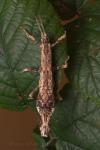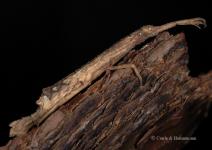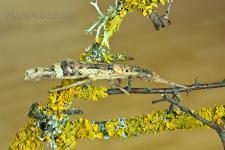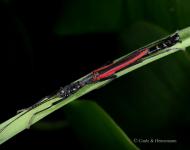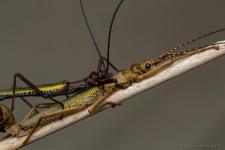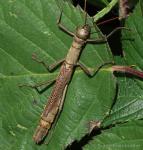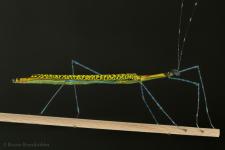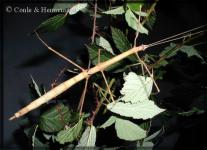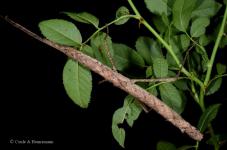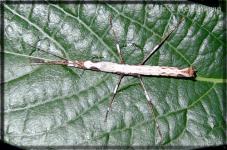At present more than 200 species of phasmids are bred in captivity. Whether for scientific purposes or as pets, it is important and very useful for serious breeders to obtain information about each stock in order to provide the best environmental conditions depending on the natural habitat and also not to mix different populations of the same species. Mixing different stocks can cause the loss of particular characteristics:
Phenotype: particular morphological characteristics of a population (Colour, ornamentation, etc).
Genotype: forget about sentences like..."it is good to renew blood from time to time"; see section "myths and legends".
Cryptic species: Sometimes it happens that several different species are grouped in a single species because it is not possible to differentiate them at a morphological level. Keeping the different stocks separated helps to prevent this kind of error and allows scientists to confirm if they are the same species or not, by an integrative taxonomic approach (morphological, molecular, ecological analysis, etc).
PSG list and CLP list
PSG and CLP lists were born from "Phasmid Study Group" and "Phasma" respectively. These are the 2 biggest associations of enthusiasts of phasmids. In the beginning, the main objective of both lists was to maintain control of the stocks that had been imported. Nonetheless, nowadays both lists are full of errors (wrong identifications, scientific names not updated, lack of information about the collecting event, lack of photos, etc.). That is why we have decided to present and bring together all known information about each of the stocks that are bred or have been bred in captivity on this website, and step by step try to correct as many mistakes as possible. For this purpose, these are the steps we plan to do:
- Merge all the info known from CLP and PSG lists. (done)
- Update all the scientific names. (done)
- Upload pictures of each stock and confirm or correct the ID. (in progress)
- Try to find the missing info for each stock. (in progress)
- After completing the previous steps, stocks that can not be verified (lack of photos, sampling data, etc.) will be removed from this list.
IMPORTANT!
- Due to the huge amount of information that needs to be reviewed, the list is not fully updated for now!. We suggest trusting only in stocks containing photos.
- If you have doubts about the changes in the names of the stocks, "HERE" you can find a list with all the updated stocks, their previous names and the reason for the change.
What is a “stock”?
Each isolated population, populations that are far away from each other or living in a very different habitat should be considered as different stocks, it does not matter if they are the same species or not. For example, populations from different mountains, valleys, islands, etc. but also from a single mountain with very different habitats depending on the altitude. It would be possible to find a low-altitude population and a slightly different population at high altitudes (ornamentation, size, etc.); even if they look alike, they should be kept as different stocks.
How to differ each stock?
Our proposal to name the different stocks is to include the origin of the stock after the name of the species and in quotation marks (as a keyword). E.g. Anisomorpha buprestoides "Ocala": Anisomorpha buprestoides is the scientific name of the species and "Ocala" refers to the place where this stock was found (Ocala National Forest, Orlando, U.S.A.)
This is why it is important to know the origin as accurately as possible, to avoid confusion with future stocks from a nearby area but different mountain, habitat, etc.
IMPORTANT! If you are not sure about the origin of your stock or if it has been mixed with others, then you should never include the keyword after the scientific name.
E.g. There are several stocks of Extatosoma tiaratum and it is known that a lot of breeders mixed them. So, if you are not sure if your stock is pure or not, then you should name it (e.g.) Extatosoma tiaratum and not Extatosoma tiaratum “Inisfail”.

